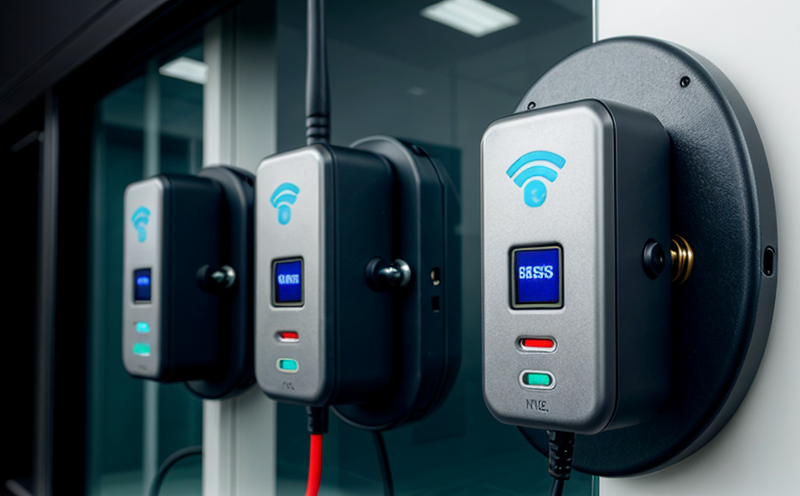ISO 21207 Corrosion and Environmental Testing of Wireless Devices
The ISO 21207 standard is a critical component in ensuring the durability and reliability of wireless devices. This service focuses on testing the corrosion resistance of electronic components under environmental conditions that mimic real-world scenarios. Our state-of-the-art facility ensures compliance with international standards, providing clients with robust data for product quality assurance.
The process involves subjecting the wireless device to various corrosive environments such as salt spray, humidity, and temperature cycling. This helps identify potential weaknesses in the design or material selection that could lead to premature failure of the device under field conditions. By adhering strictly to ISO 21207, we provide a comprehensive evaluation framework for manufacturers to enhance product longevity.
The testing protocol is designed to simulate extreme environmental conditions found in different geographic locations around the world. For instance, salt spray tests replicate coastal environments where chloride-based corrosion may occur, while humidity and temperature cycling test the resilience of devices against seasonal variations. These tests are essential not only for ensuring long-term performance but also for meeting regulatory requirements.
Our team uses advanced equipment calibrated to meet ISO 21207 specifications, including climate chambers capable of simulating wide ranges of temperatures and humidity levels. We employ state-of-the-art measurement techniques to capture even the minutest signs of corrosion or degradation. Post-testing analysis includes detailed reports outlining observed phenomena along with recommendations for improvement if necessary.
Understanding that each wireless device has unique characteristics, our approach allows customization based on specific client needs. Whether it's testing individual components or complete assemblies, we ensure all aspects are covered comprehensively under the ISO 21207 framework. This service plays a pivotal role in safeguarding investments by preventing costly recalls and maintaining brand reputation.
| Test Parameter | Description |
|---|---|
| Temperature Range | -40°C to +85°C |
| Humidity Level | 10% RH to 93% RH |
| Salt Spray Duration | 24 hours |
| Temperature Cycling Cycles | 5 cycles, -40°C to +85°C |
| Data Recording Frequency | Daily during testing period |
The above parameters are just a snapshot of what we offer. Our expertise extends beyond these basics into more complex scenarios involving multi-factorial stressors that could affect wireless devices in the field.
Scope and Methodology
- Initial Consultation: Understanding client requirements and aligning them with ISO 21207 criteria.
- Sample Preparation: Cleaning, labeling, and documenting each specimen according to ISO standards.
- Environmental Chamber Setup: Configuring the chamber for specified temperature and humidity settings.
- Test Execution: Subjecting samples to corrosive environments as per the defined protocol.
- Data Collection & Analysis: Recording all relevant data points throughout testing and performing statistical analysis.
- Report Generation: Compiling findings into a comprehensive report including recommendations for improvement if required.
Benefits
The primary benefit of ISO 21207 corrosion and environmental testing lies in its ability to predict performance issues before they become critical defects. This proactive approach allows manufacturers to address design flaws early, reducing development costs significantly. Additionally, it enhances product quality by ensuring compliance with international standards, thereby increasing market acceptance.
For R&D engineers, this service provides valuable insights into how different materials and designs perform under various environmental conditions. It facilitates informed decision-making regarding material selection and component integration. Compliance officers can leverage these results to justify investments in testing and quality assurance programs internally. Procurement teams benefit from knowing which suppliers adhere closely enough to ISO 21207 standards, thus streamlining procurement processes.
Overall, this service contributes significantly towards building trust among consumers who expect durable, reliable products from reputable brands. It supports regulatory compliance efforts while fostering innovation through continuous improvement cycles based on empirical evidence gathered during tests.





